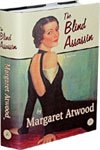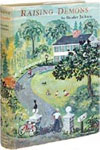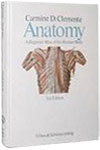A fine collection of manuscript and typescript correspondence and humorous drawings, sent to her lover Jean Carteret, many signed 'Biche'.
APPIA, Béatrice.
From
Bernard Quaritch Ltd ABA ILAB, London, United Kingdom
Seller rating 5 out of 5 stars
![]()
AbeBooks Seller since June 30, 1998
About this Item
Description:
Comprising:'Album pour Jean … Printemps 1935', with 16 pages of illustrations, 12 hand-coloured; in a ring-bound album, at the end two pen portraits of Carteret, one signed.45 illustrated letters, taking the form of bandes dessinées, often with text in verse, some hand-coloured, various sizes.'La Tragédie de la Barbe … Grande drame Bichekspearien', typescript, four pages.36 autograph letters/postcards, various sizes, 1 to 4 pages, including a few sketches, many with envelopes.Seven typescript letters, with manuscript corrections and additions, in total 13 pages.An extraordinary series of love letters, by turns passionate, mocking and lyrical, with copious illustration, sent by the Swiss-born French artist Béatrice Appia (1899 1998), best known for her illustrated children's books, to the philosopher and astrologer Jean Carteret (1906 1980), here addressed as 'cher Jean' or 'doux Jean'.Appia had studied in The Hague and then at the Académie de la Grande-Chaumière in Montparnasse, becoming associated with the painters Christian Caillard, Maurice Loutreuil, and Eugène Dabit, whom she married in 1924. During the late '20s she also began to write. Dabit was to die suddenly in 1936 in Sebastopol, while on a tour with André Gide, but before that the marriage was evidently on the decline: 'L'attitude de Dabit devient si odieuse, si lache en ce moment', she complains to Carteret here.Appia's comic illustrated missives are a riot of colour and wild imagination, lightly mocking Carteret's fondness for his beard, his recurring toothache, and his attachment to his family, touchingly jealous of the attention he obviously received from other women: in 'Le Mariage', he returns home to Nancy for a wedding, seducing a lady in the train carriage; all the female members of the audience fall in love and send him messages written on their undergarments.In 'Les deux Jeans', Appia contrasts Carteret and John the Baptist; 'Jean et la mechanique' is illustrated with fanciful machines; 'Complainte de l'Appartement' laments his poor housekeeping, with mushrooms growing on the unwashed dishes. There are some 'Petits dessins idiots pour Jean intelligent', a 'chanson triste' about a cow, and a sheet of comic poses to use when speaking at conferences. Jean's astrological interests are poked fun at with some 'automatic predictions' for 1936:Je vois des champs de saucisse Et des vollans de pain d'épice … La castration du dentifriceEt même ceux de la police …The 'Album pour Jean' is the most elaborate of these illustrated letters, and Appia refers to its compilation in another letter here: 'J'ai commencé un petit cahier pour vous, un petit album plutôt, des histoires, des sottises, des petits dessins …'. It includes several long 'stories' 'Le Voyage en Grèce', in which Jean wanders among mythological creatures and goddesses, rides a centaur, visits the Trojan Horse museum, riddles with the Sphinx, and re-enacts the Judgement of Paris; 'Le Nouveau Jardin Zoologique', a re-imagining of the zodiac; and 'Le Creation du Monde'.The unillustrated letters intersperse similarly playful moments (poems, puns, etc.) with more serious content Appia apologises for not sending an invitation to an exhibition; she is finding it difficult to get work published ('les editeurs sont des cretins'); her passion for Carteret is almost overwhelming ('Je suis profondément heureuse chaque fois que je vous vois … j'ai manqué de courage vis à vis de ce secret à porter …').Appia's Conte de la Marguerite (1935) is her most famous children's book, the tale of a daisy illustrated in the same exuberant faux-naïve style as the drawings in this collection. After the death of her husband in 1936, which may also have brought the end to her relationship with Carteret, Appia travelled extensively in Africa, publishing an account of her experiences in 1946.Carteret had fled a family career as a tailor in Nancy, coming to Paris in 1926, and studying psychology at the Sorbonne from 1929. He was part. Seller Inventory # F1975
Bibliographic Details
Title: A fine collection of manuscript and ...
Publisher: Paris, 1934 6. 19??
Signed: Signed by Author(s)
Edition: First Edition.
AbeBooks offers millions of new, used, rare and out-of-print books, as well as cheap textbooks from thousands of booksellers around the world. Shopping on AbeBooks is easy, safe and 100% secure - search for your book, purchase a copy via our secure checkout and the bookseller ships it straight to you.
Search thousands of booksellers selling millions of new & used books
New & Used Books
New and used copies of new releases, best sellers and award winners. Save money with our huge selection.
Rare & Out of Print Books
From scarce first editions to sought-after signatures, find an array of rare, valuable and highly collectible books.



